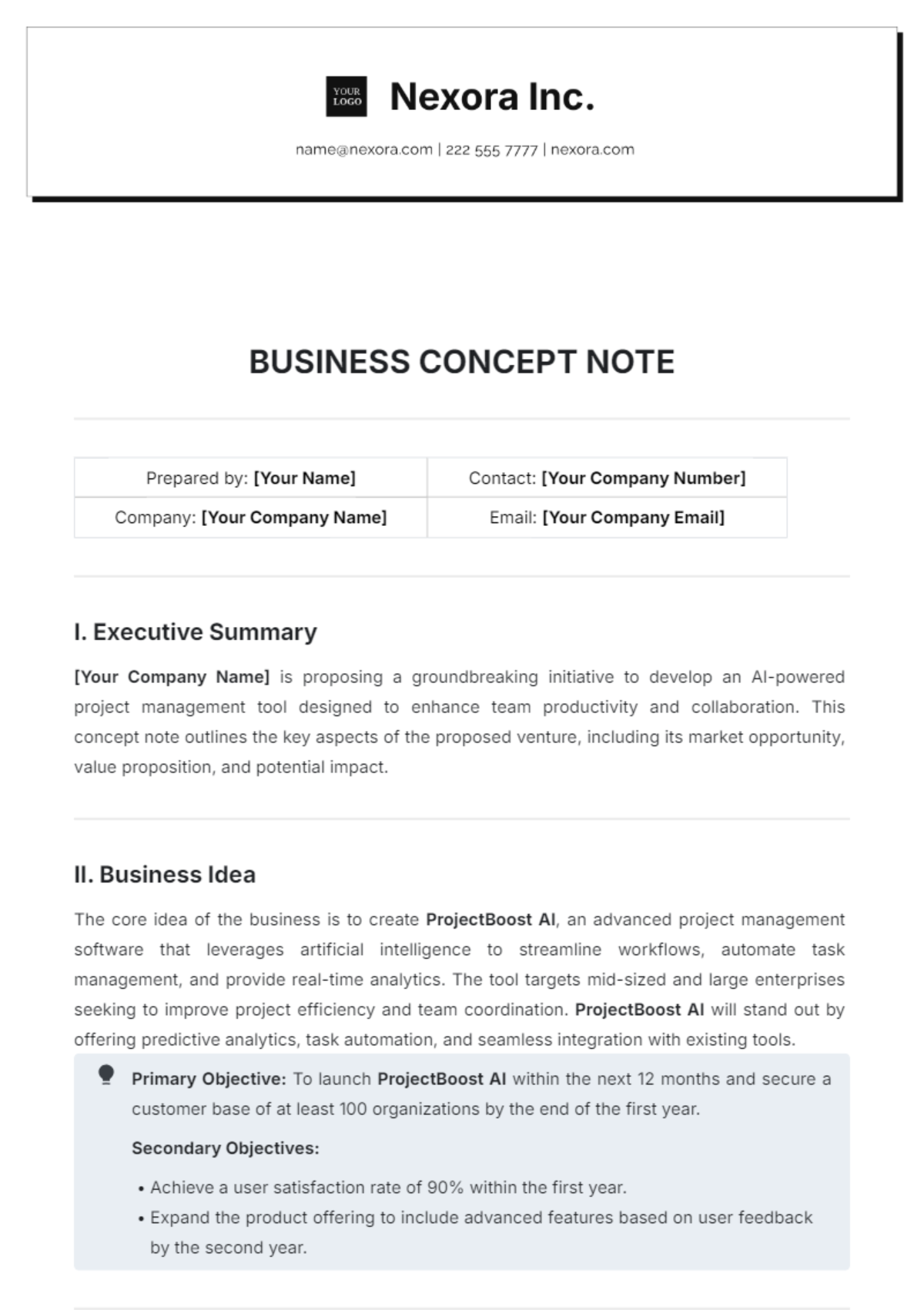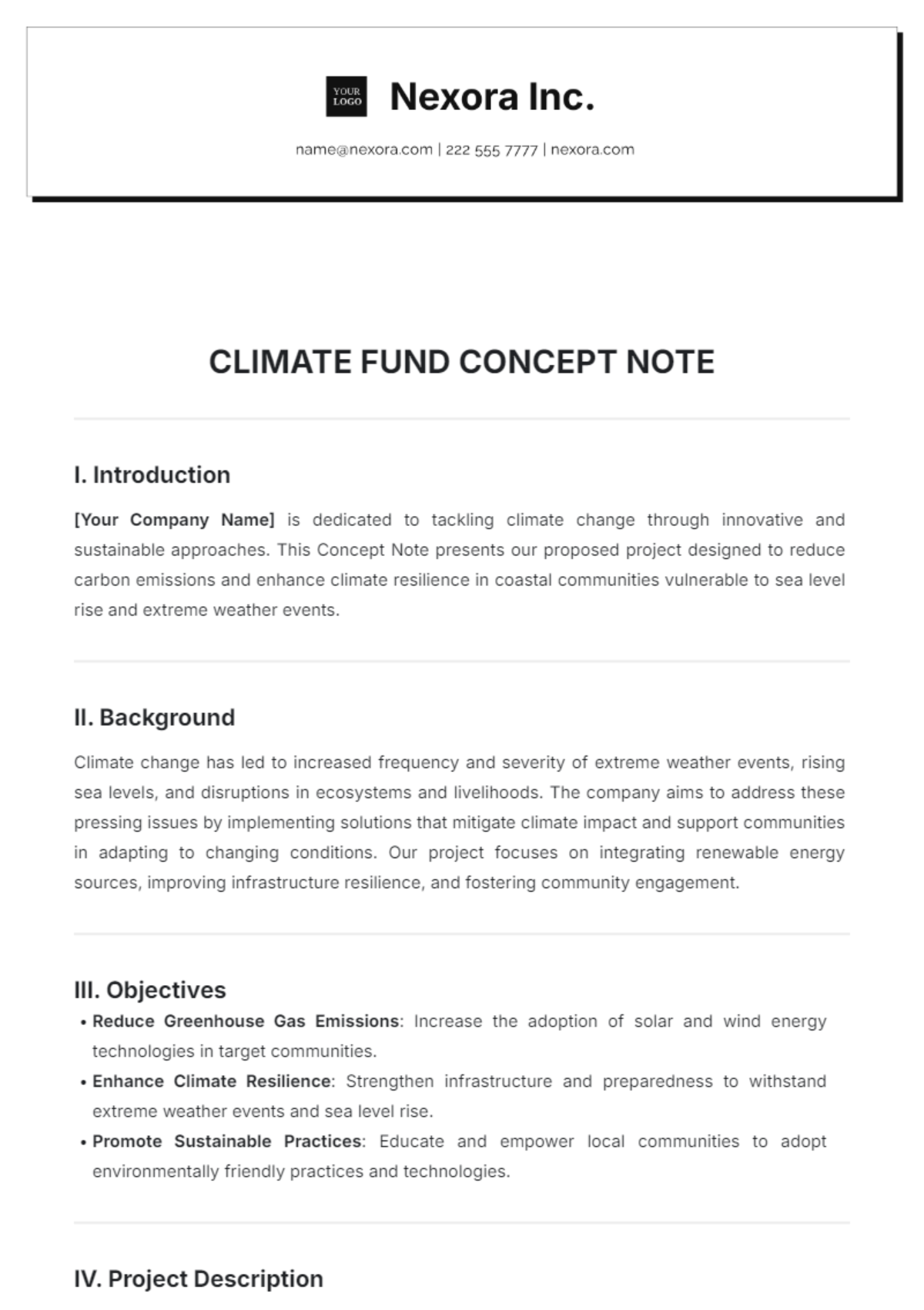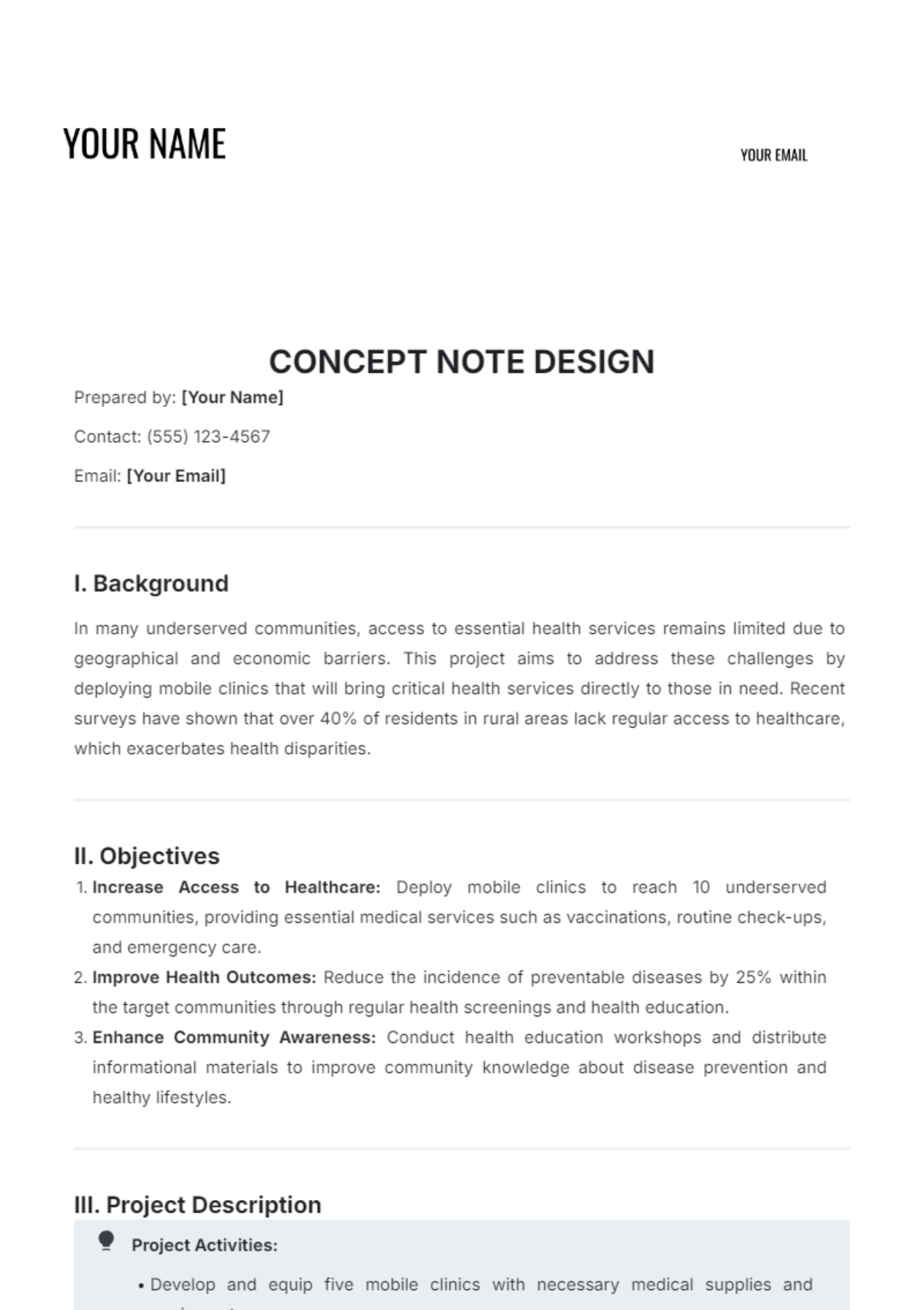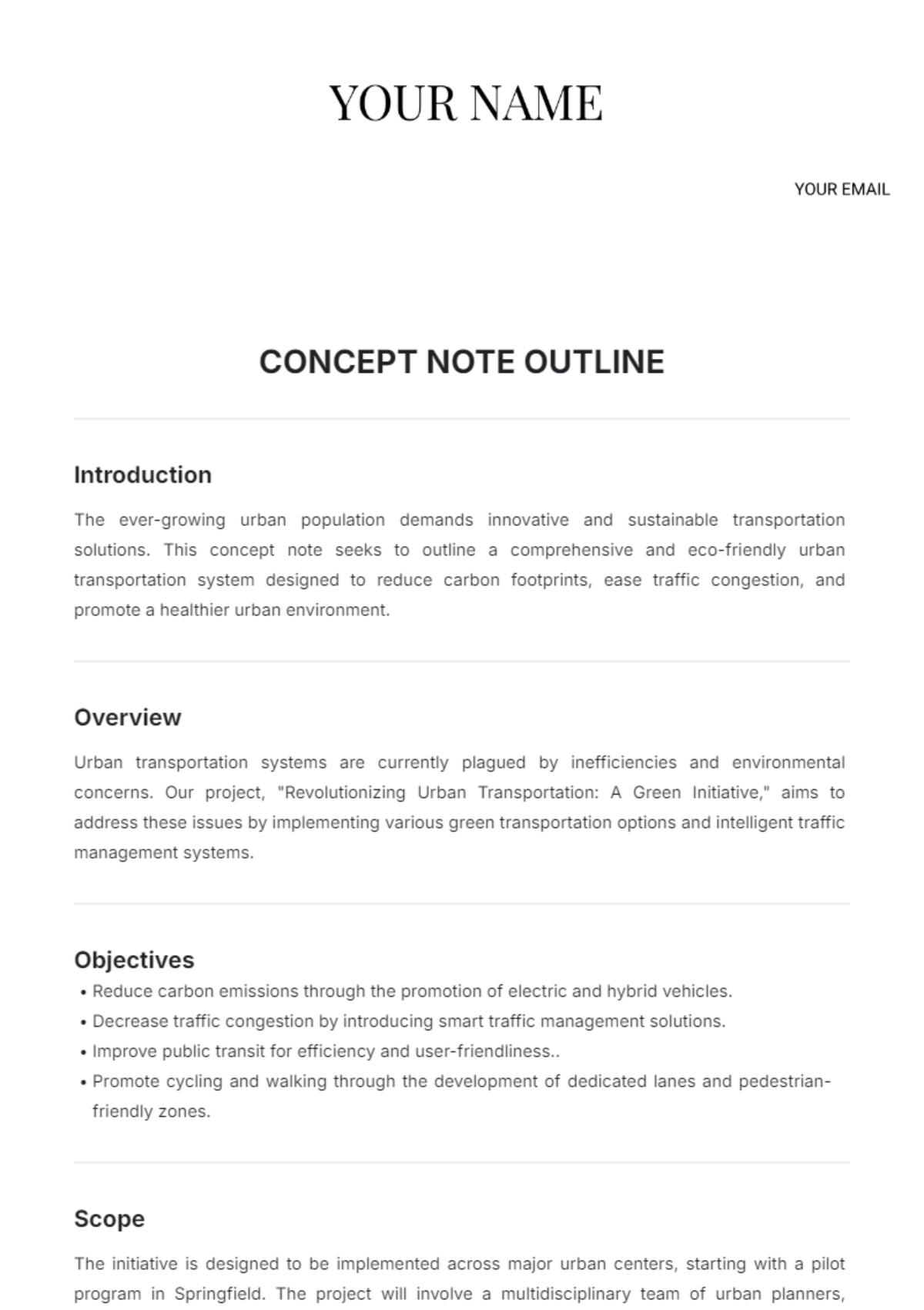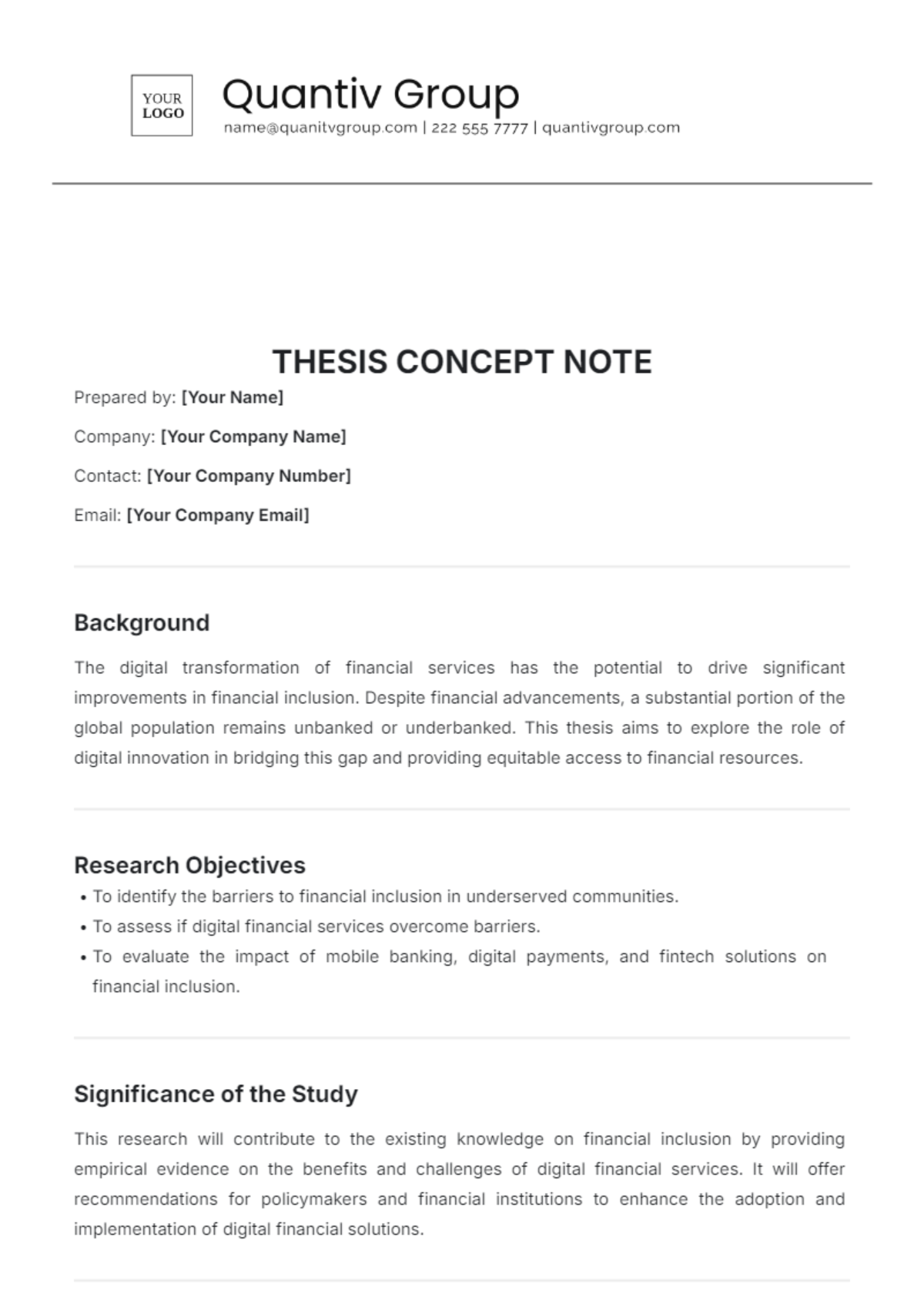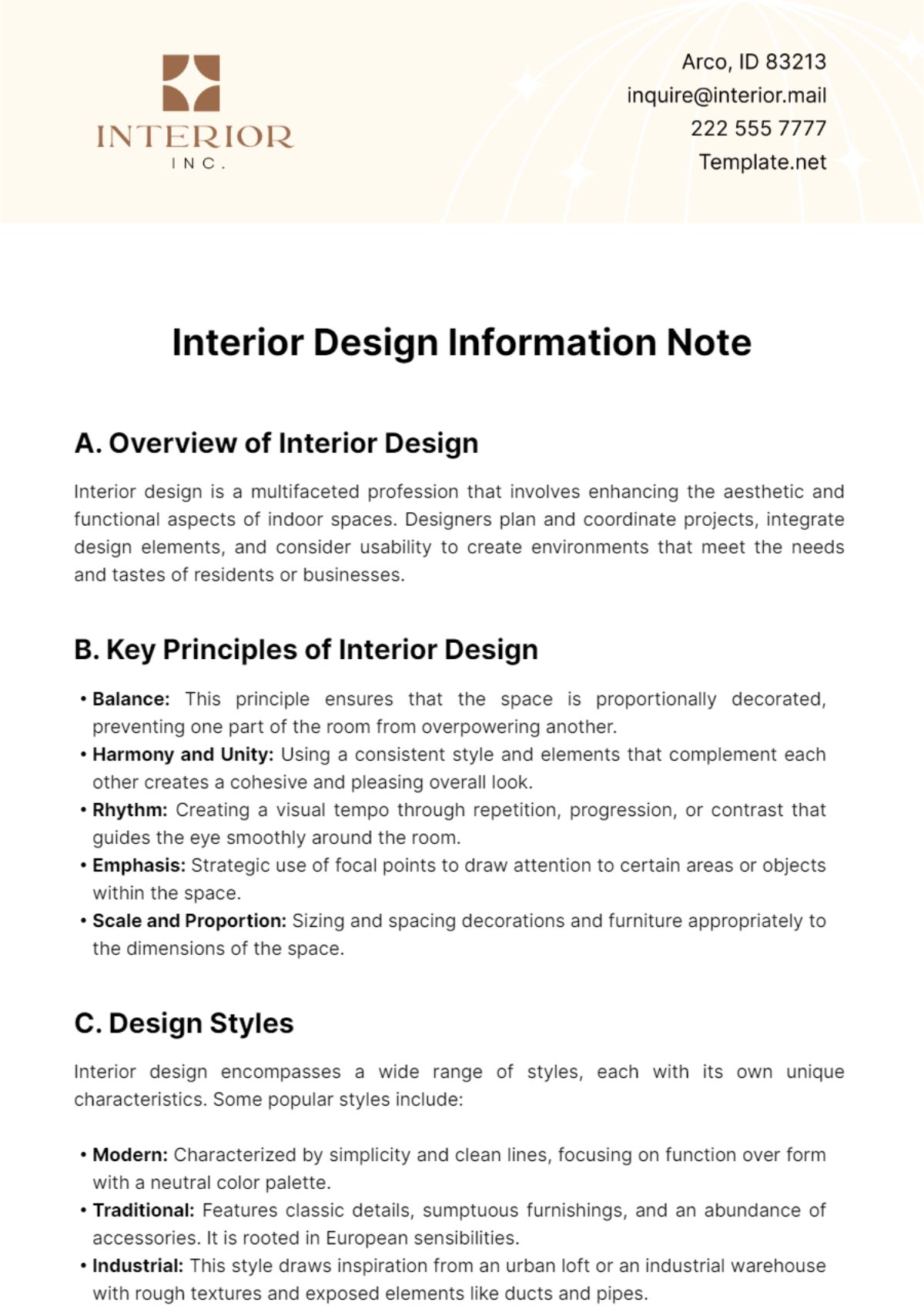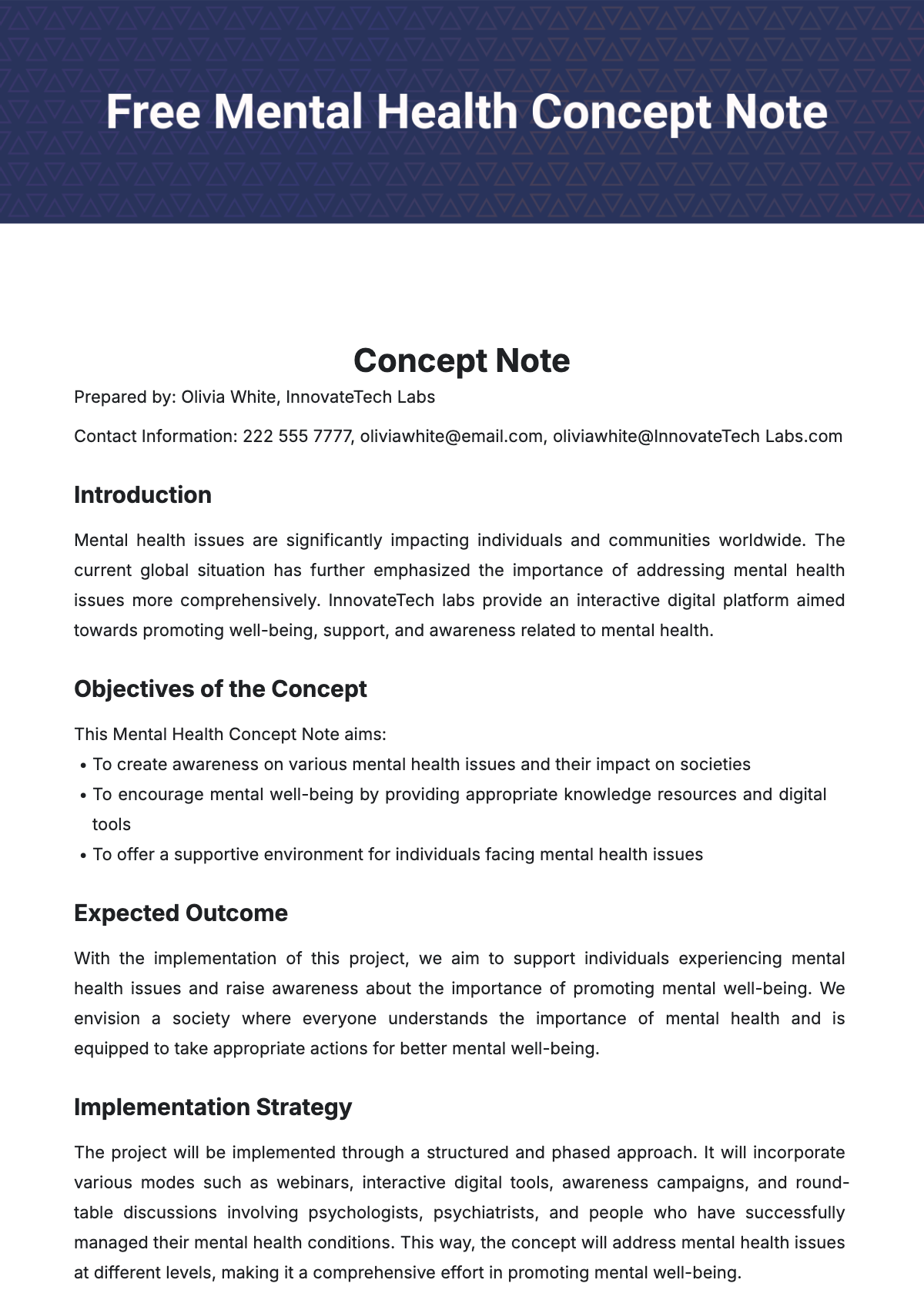CONCEPT NOTE OUTLINE
1. Title of the Project/Program
A clear and concise title that reflects the essence of the project.
Example: "Empowering Women Through Digital Literacy in Rural Communities"
2. Introduction/Background
Brief overview of the context and justification for the project.
Highlight the problem or opportunity the project seeks to address.
Provide relevant data, statistics, or anecdotes to establish urgency or importance.
3. Objectives
General Objective: The overarching goal of the project.
Specific Objectives: Clear, measurable, and time-bound objectives aligned with the overall goal.
4. Description of the Project
Proposed Activities: Outline the main actions or interventions planned.
Target Audience/Beneficiaries: Define the demographic, geographic, or other characteristics of the intended beneficiaries.
Approach/Methodology: Explain the strategy or methods to be used to achieve objectives.
5. Expected Outcomes
Specify the anticipated results or changes due to the project.
Distinguish between short-term and long-term outcomes if applicable.
Use measurable indicators where possible.
6. Justification
Explain why the project is necessary and timely.
Highlight alignment with broader goals (e.g., Sustainable Development Goals, organizational priorities).
Show the added value or unique contribution of the project.
7. Budget Overview
Provide a high-level estimate of the required funding.
Include major expense categories (e.g., personnel, equipment, operations).
Mention if any funding or in-kind contributions are already secured.
8. Implementation Plan
Timeline: A proposed schedule for activities (e.g., Gantt chart, phases).
Key Milestones: Highlight critical checkpoints or deliverables.
9. Monitoring and Evaluation (M&E)
Outline how the project will track progress and measure success.
Mention tools, metrics, or methodologies for monitoring.
Explain how lessons learned will inform future efforts.
10. Stakeholders and Partners
List key stakeholders, partners, or collaborators.
Define their roles and contributions to the project.
11. Risks and Mitigation Strategies
Identify potential risks or challenges.
Propose strategies to address or mitigate them.
12. Conclusion
Reiterate the significance and potential impact of the project.
Provide a call to action for funders, partners, or other stakeholders.
13. Contact Information
Include the name, position, organization, and contact details of the primary point of contact for the project.
Prepared by: [Your Name]
Email: [Your Email]



